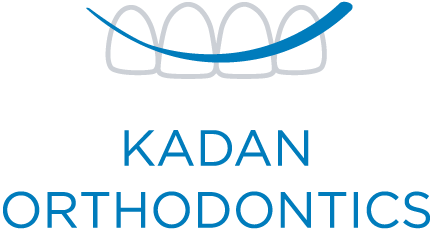Why Kids Need Braces
Your child may be nervous or excited about getting braces. Most children and teens look forward to having better smiles, but the thought of wearing metal braces at such an early age can cause some level of anxiety. Luckily, Dr. Kadan offers many options for teens and children that make wearing braces an expression of personal style.
Understanding why your child or teen needs braces allows you to make an informed decision about their care. The information will also help you explain the orthodontic treatment to your teen and child in a way that helps them feel good about the experience.
When you meet with Dr. Kadan, he may use the phrase “malocclusion.” That refers to many types of irregularities with your child’s teeth. An estimated 20 percent of people will have a degree of malocclusion at some point in their lifetime, so the condition affects adults, teenagers, and children alike. Common problems that he finds during his evaluation are:
- Gaps and spaces between the teeth
- Crooked and overlapping teeth
- Incorrect bite
- Overcrowded teeth
These problems are not only cosmetic but can lead to serious oral health issues in both young and older patients. Your family dentist will most likely note these problems during your child’s regular dental visits.
What Causes Malocclusion?
Irregularities in the teeth can happen for a number of reasons, such as:
- Genetics
- Thumb and finger sucking
- Trauma
- Losing baby teeth early
When Should My Child Get Braces?
If your dentist notes problems with the development of your child’s teeth, you will receive a referral to an orthodontist. Because malocclusion can be caused by many factors, your child may be referred to an orthodontist at any age. The recommended age for a first dental visit is seven years old, so this is typically when children have their first orthodontic visit as well.
Braces for Teens
Your dentist may opt to allow your child’s adult teeth to grow in naturally and postpone an orthodontic referral if the problems could potentially be corrected naturally. If your teenager is referred to an orthodontist, you need not be concerned that your teenager will have to undergo more extensive treatment than if the referral was made earlier.
Approximately 70 percent of all teenagers need braces, and Dr. Kadan enjoys making teenagers feel comfortable with their braces and actively participate in the process of orthodontic treatment.
Your teenager will need to make some changes while wearing braces, but we go the extra mile to help them feel confident and comfortable with their braces.
The First Orthodontist Visit
The first orthodontic visit is very important as it sets the tone for all future experiences. Dr. Kadan specializes in pediatric orthodontics and braces for children, so he is excellent with his younger patients. During the appointment, he examines your child’s teeth, gums, and jaw. He will also discuss any problems that you have noticed with your child’s speech, chewing, bite, and teeth, as well as any habits that affect your child’s teeth, such as thumb sucking.
X-rays are usually done during the first orthodontic appointment so that Dr. Kadan can evaluate the bones and tooth roots. He will also use the iTero® Element™ system to create a three-dimensional model of your child’s teeth. The system is used in lieu of molds to provide greater comfort, higher accuracy, and faster results. Dr. Kadan uses the information from the X-rays, scans and examination to recommend a treatment plan and options for braces and other orthodontic appliances.
Types of Braces
No matter what type of braces you choose for your child or teen, the appliances use the same fundamental principles to correct bite and straighten teeth. A small and comfortable amount of pressure is placed on the teeth to move them in a predetermined direction.
Children usually benefit most from metal braces that are comprised of brackets and wires. Colored rubber bands may also be used, and the selection of colors makes the experience fun for your teen and child. Your child may also be a good candidate for clear or white ceramic braces that are less visible than traditional metal braces. Another option is lingual braces that are only applied to the back of the teeth, but not every child benefits from these types of braces.
Dr. Kadan may include other appliances in your child’s treatment plan, such as headgear. If your child has overcrowded teeth, some teeth may need to be removed before the braces are applied.
Clear, removable aligners are gaining in popularity, but these types of braces are not recommended for children or patients with bite problems.
How Long Will the Braces Stay On?
The amount of time that your child or teen may need to wear braces depends on the type of correction that is recommended. Treatment time may be less than one year or multiple years, and many of today’s orthodontic appliances are specifically designed to shorten treatment times. Dr. Kadan will be able to answer this question after your child’s first orthodontic treatment.
Orthodontic treatments are performed in two phases. The first phase, known as the Active Phase, refers to the time that your child wears the braces. The goal of the Active Phase is to reposition the teeth. The second phase, known as the Retention Phase, focuses on ensuring that the teeth remain in their new position. Retainers are special appliances that are designed to help keep the teeth in place. Retainers are removable, and your child may use the retainer for a short period of time or need one for their lifetime.
Caring for Braces
Even if your child practices good oral health care using proper brushing and flossing, there will be an adjustment period after the braces are applied. Children and teens must learn how to work around the brackets and wires. Your child and teen will need to brush after each meal and floss at least twice a day. We will give your child a special flosser that is designed for use with braces.
Dr. Kadan will also give you a list of foods that should be avoided during the time that your child has braces. If your child has clear aligners, the aligners should be removed prior to eating hard or chewy foods and replaced after eating.
Your child may have some mouth discomfort when the braces are first applied and after each adjustment appointment. Over-the-counter medications will help with the discomfort. If your child damages the braces, please contact our office immediately to schedule an appointment to check and repair the braces. You should also contact us immediately if your child experiences any mouth sores from the wires or brackets.








